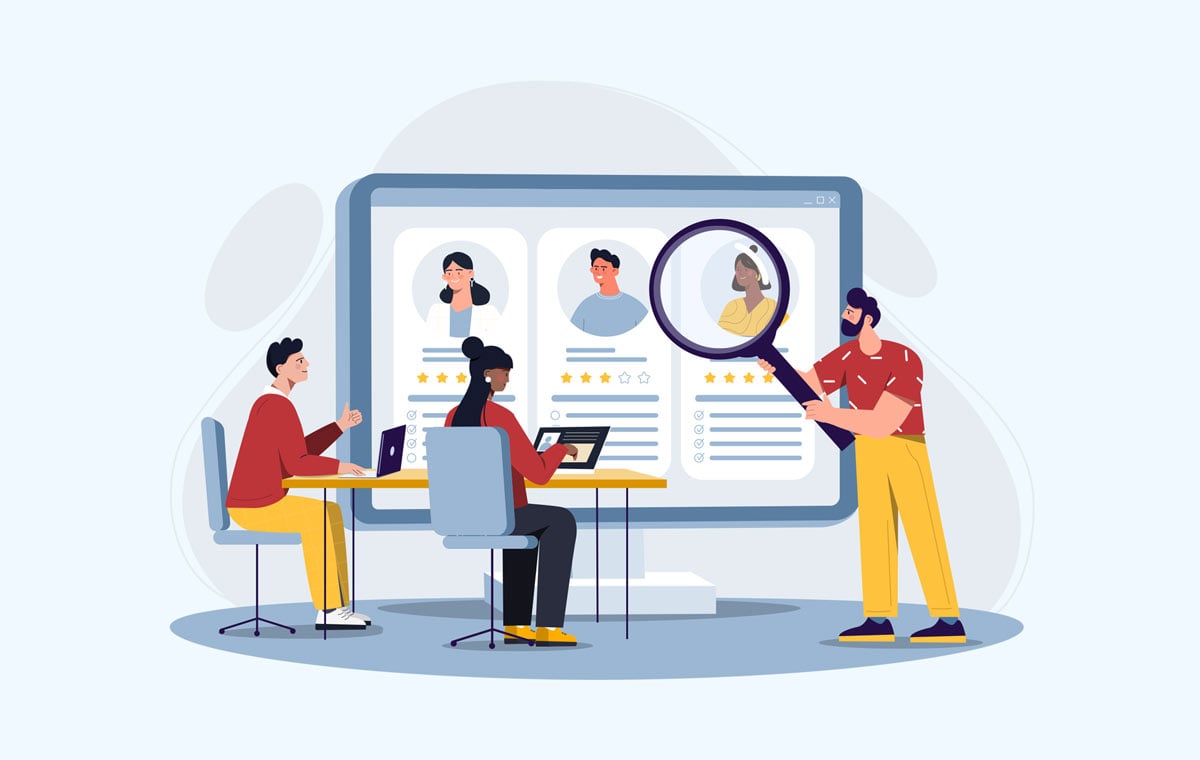The noticeable surge in diversity, equity, inclusion, and belonging (DEIB) initiatives that became a hallmark of large corporations’ response to the racial justice protests in 2020 has appeared to wane, even as diversity practitioners call for more permanent solutions.
This underscores the reality that while some progress has been made, workplaces still have work to do to move the needle with meaningful DEIB work.
What does this entail? For starters, more intentionally integrating DEIB into every facet of corporate systems to create lasting, needed shifts in behavior and mindset.
While a massive undertaking, this shift is also incredibly necessary to motivate systemic changes in the workplace.
We examine where corporate DEIB reform is still needed, offer practical DEIB examples and applications, and explain how companies can improve efforts for long-term success.
Where Is DEIB Reform Still Needed?
The murder of George Floyd and the subsequent Black Lives Matter protests in 2020 spurred a reckoning that caused workplaces across America to commit to DEIB reforms and initiatives.
In fact, of the 39.7% of companies with a dedicated DEIB role, more than half were created between 2021 and 2022, according to Culture Amp’s 2022 Workplace DEI Report “Understanding the DEI Landscape.”
During that same time, the number of companies that requested feedback on their DEIB initiatives and employee experience tripled between the second and fourth quarters of 2020.
But by 2021, interest in such programs returned to around the same levels as before the massive protests in 2020. What’s more, compared to 2020 and 2021, DEIB programming effectively stalled in 2022.
Why is this the case?
“I think it’s the frenzy,” says Albert E. Smith Jr., an experienced DEIB practitioner in the financial technology industry. “The euphoria, the hyper-arousal of the moment that generated a lot of energy in the industry overall, and companies were confronted with having to fall in line with the customer base and the workforce.”
“Where a lot of organizations fell short,” Smith explains, “is they underestimated just how difficult it is to turn a ship mid-stream and what it required to really transform our spaces.”
While workplaces have made some strides, a significant shift from isolated initiatives to lasting changes is needed.
To promote long-term success, organizations must be more intentional about integrating DEIB into their systems—inspiring fundamental shifts in behavior and mindset over time, Smith explains. In contrast with intermittent trainings or surveys—while helpful—real progress is made when companies set strategic plans and goals.
“When we're able to acknowledge that the work of DEI isn't this thing that's kind of outside our business, but it's integral to our business,” Smith says, “I think we're going to start seeing a lot of growth in our organizations."
DEIB Examples & Applications in the Workplace
What exactly do these strategic plans and strategies look like in application?
Every organization is different, and therefore, should formulate a DEIB strategy that makes sense for them.
The following are some specific examples and applications from the aforementioned Culture Amp report that companies might consider when developing a robust DEIB strategy:
- Utilize DEIB Data for Decision Making
- Implement Employee Recognition, Mentorship, or Sponsorship Programs
- Foster Transparent Career Advancement Processes
- Offer DEIB Training
- Hire & Promote Underrepresented Candidates
- Hold DEIB Conversations & Events
- Host External Consultants & Thought Leaders
- Conduct DEIB Surveys
Implementing these practices goes a long way toward ensuring full DEIB integration and reduces the chances of slowly allowing such initiatives to fade over time.
How to Improve DEIB Efforts
To promote necessary, lasting changes within organizations today, corporate leaders should support strategic DEIB initiatives by prioritizing considerations, including but not limited to the following:
Remove Non-Inclusive Language
Inclusive language is key to fostering belonging in workplace culture. It avoids biases, slang, and harmful expressions referring to a person’s age, sexual orientation, race, socioeconomic status, abilities, religion, or other identifiers.
However, using non-inclusive language reinforces stereotypes and jeopardizes employee trust.
Modifying company language—interpersonally, online, and in any interactive spaces—acknowledges diversity, conveys respect and creates equitable opportunities for all people to comfortably engage.
Leadership Buy-in
Leadership support heavily impacts the success or failure of DEIB work.
However, this goes beyond merely “signing off” on an initiative; genuine buy-in requires action and intention to remain committed, explains an analysis from DEIB specialist, DSRD Consulting.
While each person has a stake in the success of these initiatives, real change happens when leaders take action to address systemic issues in the workplace, explains Smith.
“Systems change doesn’t happen at the individual level. It happens at the systems level,” Smith says. “For those of us who wield more power, it is incumbent upon us that we leverage that power and our position to really interrogate our systems and our processes to ensure we are reimagining them to reflect the shift in our own personal mindset.”
Champion Employee Resource Groups (ERGs)
Also referred to as “affinity groups,” employee resource groups (ERGs) allow people with shared experiences to connect, discuss challenges, and provide support in a safe space.
Healthy workplaces often align initiatives with ERG feedback and perspectives—understanding that it is mission-critical to overall company success.
Not only does this foster a more inclusive, receptive work environment, but a recent study from Salesforce—a leading customer relationship management (CRM) software company—highlights a “strong correlation” between ERGs and DEIB in “boost[ing] company culture and champion[ing] DEI initiatives.”
Create Opportunities for Equity
Each person has something vital to bring to the workplace.
However, discrimination, stigmatization, biases, and other inequities put some people at a disadvantage.
It is crucial workplaces prioritize equity—removing hurdles and providing support so each person has an equal playing field, from the beginning.
“Our workforce is the most diverse it has ever been,” Smith says. “What we have to learn to do is, how do we manage diversity? How can we manage the collective of experiences, the multivocality of experiences, in a way that drives mission and impact, in organizations that are about the bottom line? And how do we do it in a way that’s affirming to those that we employ? How do we do it in a way that integrates them into the value statement?”
Measure DEIB Progress
While strategically creating new DEIB initiatives is a good start, companies must also track and measure progress to understand how to address issues over time. One such way is by setting DEIB goals that are specific, measurable, achievable, relevant, and time-bound (SMART).
These tangible objectives are vital in guiding an organization’s direction, reinforcing accountability, and promoting intentionality.
Hope for DEIB Success in the Workplace
Although organizations have made some progress in the past few years, it is clear that change is needed to make these efforts more sustainable.
As organizations move forward, Smith stresses two things to remember:
- These deep shifts do not happen overnight.
- There is still hope for a successful future.
“It is a huge lift to change organizational structure because there are so many things that are overlapping and interconnected that may be causing harm,” says Smith. “You recognize that the task at hand is not something that can be achieved in a year, but that it will take a multi-year process to begin to see slight and subtle changes. And in that process, because organizations are evolving all the time, what we are solving for today might not be what we are solving for a year from now.”
Nonetheless, there is still hope for these efforts, Smith feels, citing Cornel West’s distinction between hope and optimism:
“Hope is about making a leap beyond the evidence that is given to you. Optimism usually looks at the evidence and sees whether it's possible to infer that things are going to get better.”
Importantly, Smith remains optimistic about what the future holds.
“I have a lot of hope in the work that we do—hope and knowing that I look at what’s in front of me and say, ‘This is not good right now,” Smith tells InclusionHub. “But hope is what my ancestors did to anchor on, as a Black person, when they said, ‘Keep your hand on the plow and know that tomorrow will be better.’ Know that, we will not recognize it in our lifetime, but we must continue to pursue it.”
InclusionHub is an online resource directory dedicated to raising awareness about and improving DEIB, digital accessibility, and other important issues. To learn more about improving your organization’s DEIB efforts, contact us today.






Leave a Comment